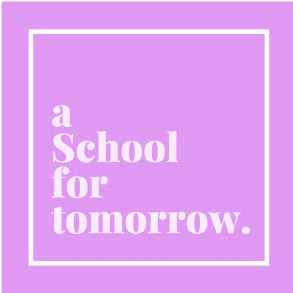Game Changers | Learn | Future Schools
Personalising Pathways for Performance in Schools
What do we mean by performance? What lies at the heart of how great schools do what they do?

Let’s start by thinking about the performance of a school. What is the “secret sauce” of high-performance schools? Good schools get the fundamentals right and focus on the whole education of the whole person. Great schools assemble the ingredients of high-performance culture in delivering this education. They consistently demonstrate an increasing propensity towards inspiring, challenging, and supporting students to fulfil their potential to be young people of character and competency. They can identify the ‘secret sauce’ of aspirations, a sense of kinship, and pathways to success, and apply this to a culture of inspiration, challenge, and support. This culture fosters both the pursuit of excellence by young people of character, and the sense of belonging to and engagement in school. It keeps them in their groove and holds them to the educational purpose of desired graduate outcomes based on 21C civic, performance and moral character competencies.
The journey of becoming for a student is, therefore, a story of change and growth through the experience of gaining the mastery of our essential competencies based on civic, performance, and moral character, as well as the attainment of the learning habits of self-efficacy and adaptive expertise required to thrive in 21C. It is all about change, transformative change - changing the world one student at a time and one school at a time. Across the world, we never see effective, meaningful and good change occur other than through intimate, compassionate, and energetic agency from within the heart of a school and its interconnected relationships, values, and exchange of value propositions. Schools change themselves; systems don’t.
How do great schools transform themselves? They do so by functioning as authentic, mature, and high performing communities of inquiry and practice. So a great school should track, gather evidence about, and evaluate its organisational maturity as a fit for purpose school of character. It should conduct this measurement of its high performance both in terms of the learning experiences and graduate outcomes of its students, as well as in its operation as a learning organisation. To do this, they should interrogate six key components of an excellent 21C education:
-
-
The character, climate and culture of the school
-
The leadership of the educational programs
-
The effectiveness of teachers in growing the ‘whole person’
-
The effectiveness of student educational experiences and outcomes
-
The alignment of strategy and operations with respect to character education
-
The nature of teacher professionalism in a community of inquiry and practice dedicated to the attainment of its desired graduate outcomes based on 21C civic, performance, and moral character competencies.
-
And what really fuels transformation in schools throughout all of the six components is the work of teachers. All of the international research of the past three decades points to teachers as having the greatest impact on student outcomes, so long as they are invested in what they do. This is usually grounded within strong relationships of character apprenticeship and evidenced by their work in attaining mastery of equivalent competencies to those of their students and advanced habits of self-efficacy and adaptive expertise.
Good schools get the fundamentals right and focus on the whole education of the whole person. Great schools assemble the ingredients of high-performance culture in delivering this education.
How can we best help teachers to acquire this mastery? How do we help them to become invested and to have the right impact? We know that programs of professional learning within growth-minded culture are critical. Yet, too often we see a lack of specificity in the personalisation of pathways for individual development of teachers. Simply coaching colleagues is not enough. So what model should we use?
- Assess investment and impact: We need to begin by assessing their personal and professional investment in the desired culture of the school. Do they understand what the school stands for, do they want to be part of the stated culture of the organisation, and are they committed towards growing in their capacity to contribute towards this over time? We also need to consider their level of positive impact on outcomes for students and staff. How consistently do they make a difference in the learning journeys of children and adults alike? Do people become better at demonstrating their competencies because of the work of these teachers?
- Guide and assist the selection of the right pathways for development: Different people need different incentives to grow and different strategies to help them do this. We have found the following to be helpful in helping staff to make the right choices:
- Offer understanding and guidance to staff with low investment and low impact: They need to know that the choice to commit to greater investment and securing greater impact lies with them, so long as the rationale for what the school is doing is made clear, as well as the school’s commitment to and desire for the staff member to join in the mission, as well demonstrating the school’s belief that the staff member has the capacity to initiate, to take the right first steps. Although not all staff in this position will make this choice, the school must assume that each teacher inherently can do so.
- Provide care and clarification to staff with high investment and low impact: Staff who want to do the right thing but can’t seem to get far in the process need careful mentoring. They need to be encouraged to focus on taking the small steps in the right direction and to seek out solutions in relationship with others, especially in collaboration with colleagues with whom they can gain an evidence-based understanding of what works to help improve the outcomes of others.
- Nurture exploration and evaluation with those who are high in impact but low in investment: For those whose capacity and capability are clear, but whose alignment to mission is lacking, a conversation about benefits for them and the tangible return on investment is necessary to promote fundamental changes to teaching and learning habits.
- Harness the engagement and alignment of those with high investment and high impact: Staff who “get it”, “give it”, and “grow it”, need to be given real roles of leadership in the community of inquiry and practice to allow them to model, coach, and scaffold practice to others.
- 3. Identify the effect and respond accordingly: Using the same evidence-based approach that characterises all good practice, consider the way in which the staff member’s personal performance has contributed to the rate, quantity, frequency and quality of outcomes (both process and product) in terms of both competencies acquired and also wellbeing.
Understanding how to tune a process of performance development for teachers to their situation and needs by balancing impact with investment and offering personalised pathways may well be key knowledge for Future Schools need to ensure that their educators are actually bringing about the necessary change that characterises all good learning and development.






